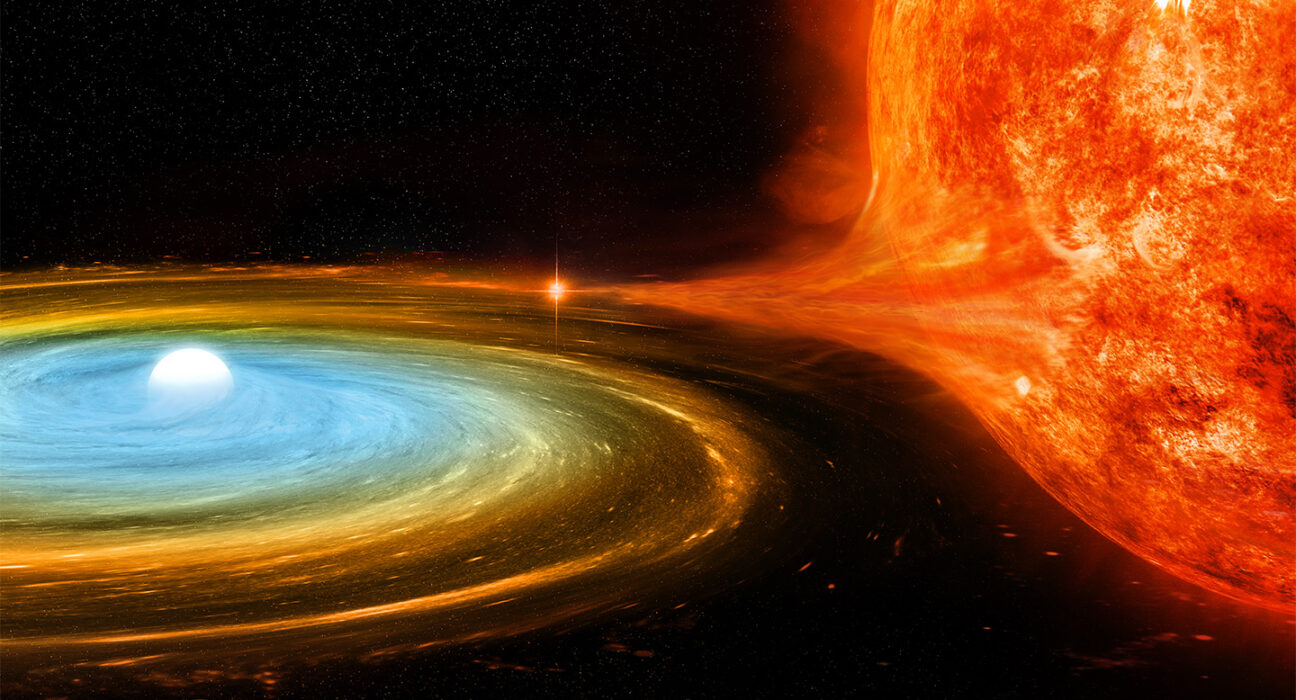astronomy: The area of science that deals with celestial objects, space and the physical universe. People who work in this field are called astronomers.
behavior: The way something, often a person or other organism, acts towards others, or conducts itself.
binary star: A system of two stars in which one revolves around the other, or they both revolve around a common center.
cloud: A plume of molecules or particles, such as water droplets, that move under the action of an outside force, such as wind, radiation or water currents.
constellation: Patterns formed by prominent stars that appear to lie close to each other in the night sky. Modern astronomers divide the sky into 88 constellations, 12 of which (known as the zodiac) lie along the sun’s path through the sky over the course of a year. Cancri, the original Greek name for the constellation Cancer, is one of those 12 zodiac constellations.
cosmic: An adjective that refers to the cosmos — the universe and everything within it.
data: Facts and/or statistics collected together for analysis but not necessarily organized in a way that gives them meaning. For digital information (the type stored by computers), those data typically are numbers stored in a binary code, portrayed as strings of zeros and ones.
eject: To suddenly or forcefully push or jettison something from its position, container or housing.
environment: The sum of all of the things that exist around some organism or the process and the condition those things create. Environment may refer to the weather and ecosystem in which some animal lives, or, perhaps, the temperature and humidity (or even the placement of things in the vicinity of an item of interest).
gamma rays: High-energy radiation often generated by processes in and around exploding stars. Gamma rays are the most energetic form of light.
gravity: The force that attracts anything with mass, or bulk, toward any other thing with mass. The more mass that something has, the greater its gravity.
light-year: The distance light travels in one year, about 9.46 trillion kilometers (almost 6 trillion miles). To get some idea of this length, imagine a rope long enough to wrap around the Earth. It would be a little over 40,000 kilometers (24,900 miles) long. Lay it out straight. Now lay another 236 million more that are the same length, end-to-end, right after the first. The total distance they now span would equal one light-year.
mass: A number that shows how much an object resists speeding up and slowing down — basically a measure of how much matter that object is made from.
matter: Something that occupies space and has mass. Anything on Earth with matter will have a property described as “weight.”
nova: An explosion that occurs on the surface of a white dwarf, due to the accumulation and subsequent fusion of hydrogen on its surface.
observatory: (in astronomy) The building or structure (such as a satellite) that houses one or more telescopes. Or it can be a system of structures that make up a telescope complex.
planet: A large celestial object that orbits a star but unlike a star does not generate any visible light.
pressure: Force applied uniformly over a surface, measured as force per unit of area.
radio: Referring to radio waves, or the device that receives these transmissions. Radio waves are a part of the electromagnetic spectrum that people often use for long-distance communication. Longer than the waves of visible light, radio waves are used to transmit radio and television signals. They also are used in radar. Many astronomical objects also radiate some of their energy as radio waves.
red giant: A star having a large diameter and relatively cool surface. It is a stage in a normal star’s life that occurs after it has stopped burning hydrogen. A red giant has a core in which helium is fusing into carbon.
shock waves: Tiny regions in a gas or fluid where properties of the host material change dramatically owing to the passage of some object (which could be a plane in air or merely bubbles in water). Across a shock wave, a region’s pressure, temperature and density spike briefly, and almost instantaneously.
star: The basic building block from which galaxies are made. Stars develop when gravity compacts clouds of gas. When they become hot enough, stars will emit light and sometimes other forms of electromagnetic radiation. The sun is our closest star.
stellar: An adjective that means of or relating to stars.
supernova: (plural: supernovae or supernovas) A star that suddenly increases greatly in brightness because of a catastrophic explosion that ejects most (or sometimes all) of its mass.
system: A network of parts that together work to achieve some function. For instance, the blood, vessels and heart are primary components of the human body’s circulatory system. Similarly, trains, platforms, tracks, roadway signals and overpasses are among the potential components of a nation’s railway system. System can even be applied to the processes or ideas that are part of some method or ordered set of procedures for getting a task done.
type 1a supernova: A supernova that results from some binary (paired) star systems in which a white dwarf star gains matter from a companion. The white dwarf eventually gains so much mass that it explodes.
white dwarf: A small, very dense remains of a star that is now the size of a planet. It is what is left when a star with a mass about the same as our sun has exhausted its nuclear fuel of hydrogen and cast off its outer layers.












